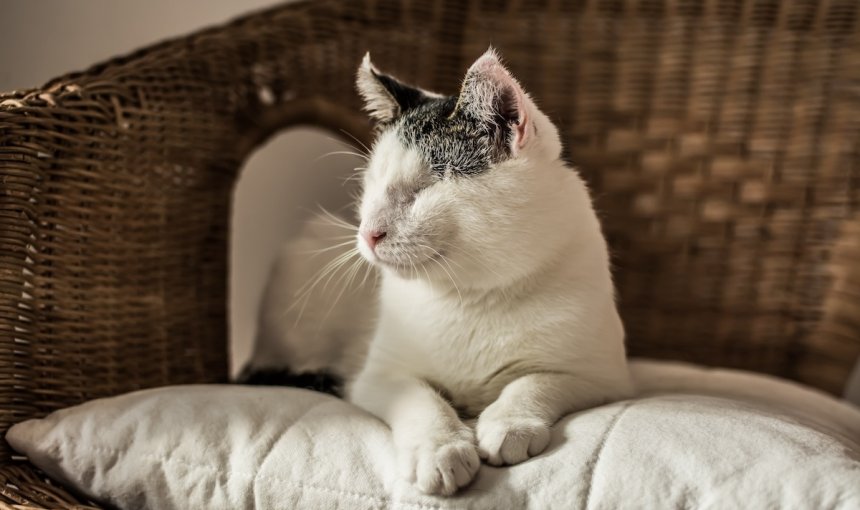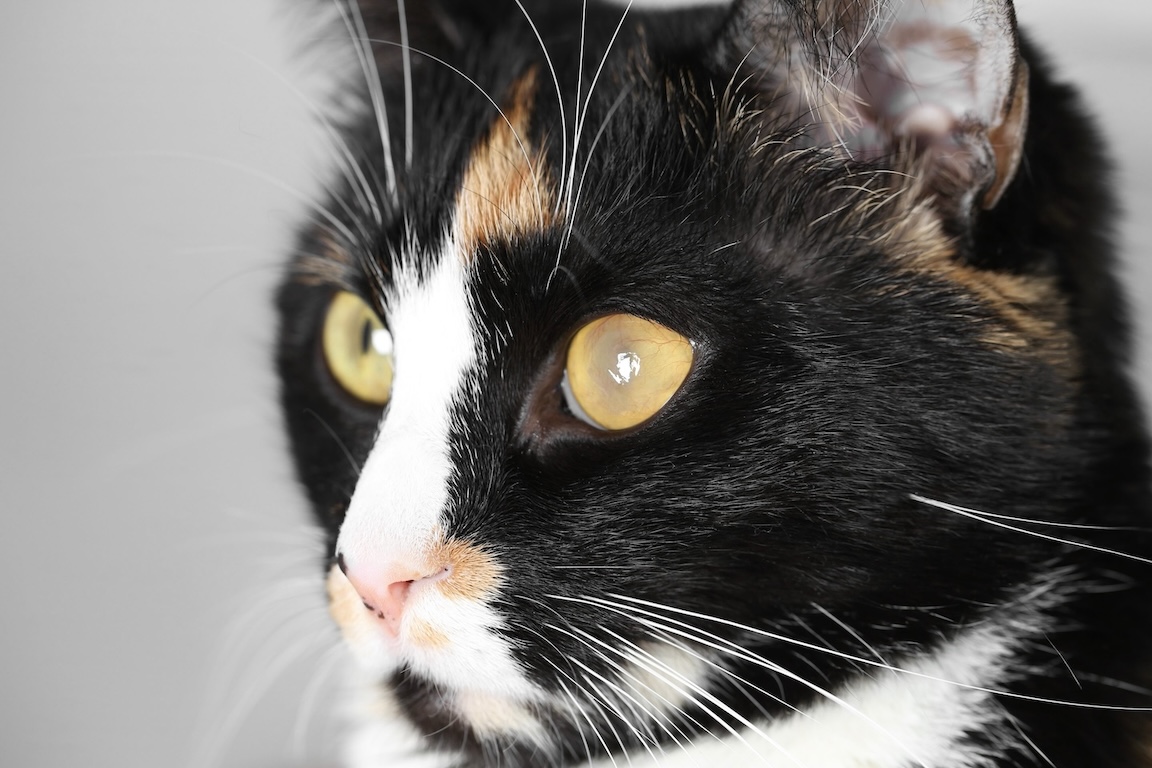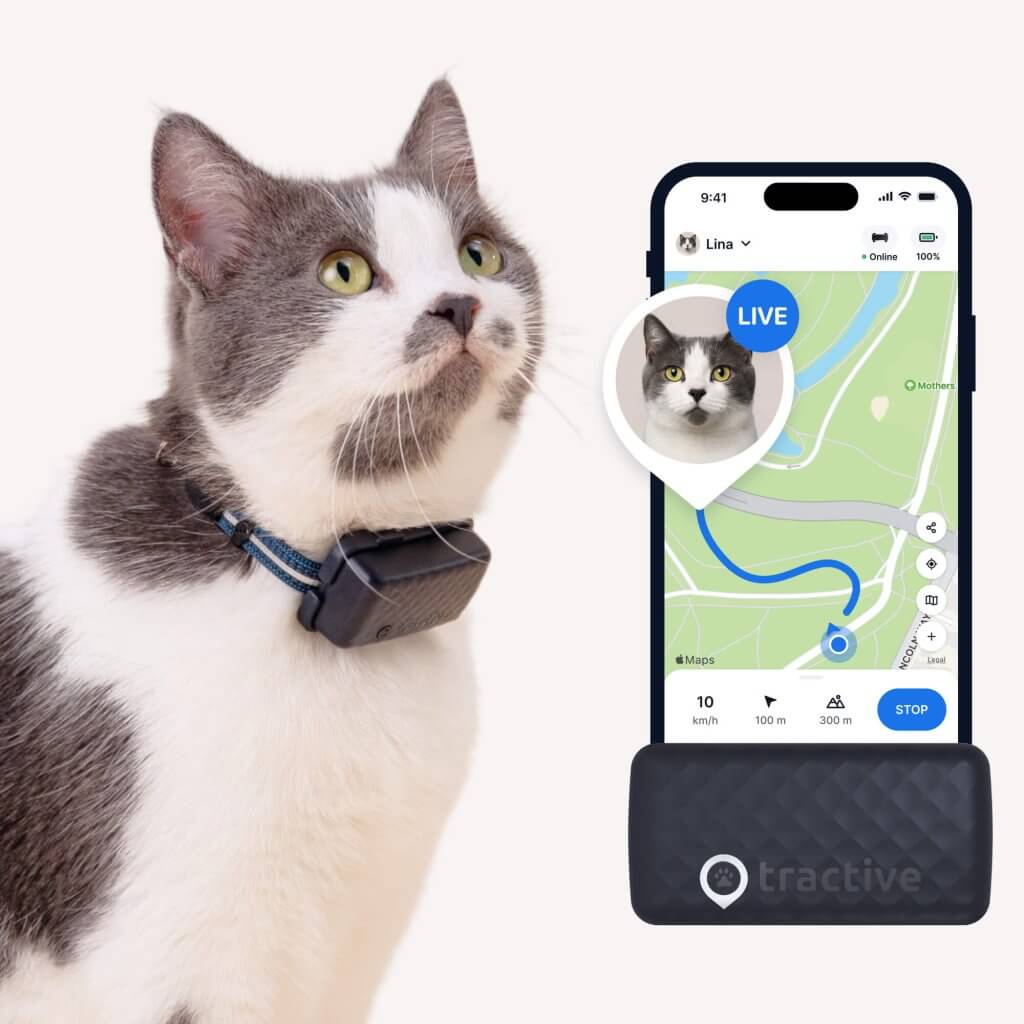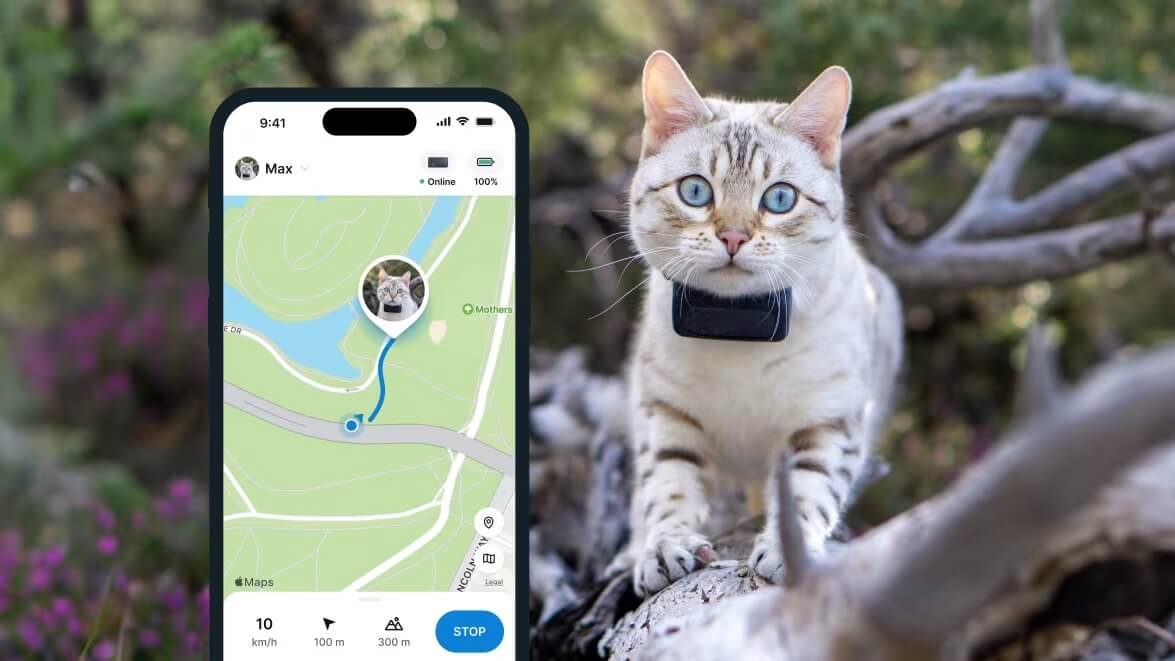How To Best Care For A Blind Cat & Keep Them Safe
Despite their difficulties seeing, blind cats do live happy, deeply fulfilling lives - provided you're ready to help them adjust and make their way around a little. Here's how to get started.

Thinking of adopting a blind cat? Or has your buddy gotten a bit cloudy around the eyes as they’ve grown older? Not to worry – caring for a visually-impaired cat isn’t too different from a sighted one. With a few tweaks to your environment, you can help them make their way around just fine. Here’s how you can care for yours – and prevent them from venturing too far away from home.
Key Takeaways
To care for a blind cat, the first priority is their safety.
Never allow them outdoors unsupervised, and cat-proof your home by securing dangerous areas. Avoid rearranging your furniture to preserve their “mental map” of the house.
Blind cats rely on their other senses to navigate and play.
You can help them by using toys with sounds or scents and establishing a predictable routine for feeding and playtime to help them feel secure.
Use a smart cat collar as an emergency measure.
Your Tractive device helps you to track your cat both in real-time outdoors and at short range indoors. From the app, you can also set up virtual fences to keep them from wandering into unsafe areas.

Find out where your cat spends their time.
Read moreHow can I tell if my cat is blind – or getting there?
If you’re suspecting your buddy might be slowly losing their vision, here are a couple of signs to watch out for:
- Changes in your cat’s eyes
Look for clouding, discoloration, or unusual reflections. Sometimes, their pupils might be unevenly-sized or don’t respond to changes in light. - Behavioral changes
Does your buddy seem a bit…jumpier than usual? Or just more cautious than before? A blind cat may be reluctant to jump or run and might bump into walls or furniture more often. - Difficulties getting around
A blind cat might find it difficult orienting itself or finding its way to familiar places. Like food or water bowls, especially if you’ve moved them elsewhere. - Lack of response to stimuli
Stand in front of your cat and throw some small object – like a cotton pad or tissue. (Something that doesn’t make much noise landing on the floor.) If your cat picks up on it (especially before it touches the ground), they might still have their sight.
⚠️ If you do suspect that your cat is blind – or slowly losing their vision – drop by your vet right away.

How do blind cats make their way around?
Blind cats can still make their way around through a combination of other senses and their instincts. Including their:
- Sense of smell
Especially for food, water, bedding, litter box, and other important spots. Cats use scent marking from the pads of their paws to “claim” little bits of territory around your house – and outdoors. This can help them navigate their environment. - Sense of touch
Through their whiskers, which can help them gather information about their surroundings. These include movements in the air and even obstacles in their path. Likewise, cats’ paws are also very sensitive and can help them recognize different surfaces, like mats and rugs. - Sense of hearing
With cats being able to detect sounds from a great distance. Cats can also get used to the sound of your household appliances, like the humming of your fridge or the ringing of your doorbell, to help orient themselves. - Memory and spatial awareness
Cats have great memory and can remember how furniture and other obstacles in their environment are arranged. This can help them avoid obstacles and move around safely. Blind cats tend to follow fixed routes to move around safely, getting from one place to another by using specific paths and points at home. - Vibrations in the ground
Which can help cats gather information about their surroundings – like footsteps or the tapping of objects – and find their way around.
How can I let a blind cat outdoors – safely?
Despite the risks, letting your cat outdoors shouldn’t be something you restrict completely. An outdoor cat that’s lost an eye in a fight or due to age can still make their way around their territory with their sense of touch, hearing, smell, and even vibrations in the ground. A cat that’s been blind from birth has had even longer to learn how to make their way around, so they could benefit from short periods of supervised outdoor time.
Blind cats in general tend to be on the more cautious side – so they’re less likely to stray too far by themselves entirely. So if you want to let your blind cat outdoors, here are a couple of your options for max safety.
Never let your cat out unsupervised
Blind cats might be savvy, but even they’re vulnerable to all manner of dangers outdoors – like from passing cars, cyclists, open pools, other animals, poisonous plants, and more. If you can get your cat used to a harness and long lead, you can take them out to enjoy some fresh air together. A harness and lead works like a safety anchor in case your cat spooks from a loud noise and bolts.
⚠️ Should you carry your blind cat around outdoors? Vets don’t recommend it. The resulting lack of sensory stimulation can actually make your cat feel more confused and disoriented! Cats also tend to leave a scent trail behind with their paws. So if you let yours wander around in a safe, supervised space, they can gradually learn to “remember” the path back home.
Ensure your backyard (or outdoor space) has a secure fence
If you have a garden, a secure fence can go a long way helping keep your cat indoors. In fact, an outdoor cat enclosure – or a catio – can help give your buddy some safe outdoor time without compromising on their safety.
Be extra mindful around balconies or terraces
Never let your cat out into a balcony or terrace without you being around. You can also cat-proof your balcony with special wire mesh or another safe covering that can allow your cat some sunlight and outdoor time – without risking them falling off. Some of your other options include:
- Balcony netting
- Plexiglass panels
- Mesh cloth
- Bamboo fencing
Ensure your cat is easy to identify
Besides fall- or escape-proofing your balcony, it’s also a good idea to get your cat used to wearing a collar with an ID tag. Ideally, one with your contact details. Or better yet, get your cat microchipped to have a permanent ID tag implanted in their shoulder blades. Make sure you’ve updated your contact details on the national microchip database after. All these steps can help ensure your cat isn’t mistaken as a stray and sent off to a shelter or rescue organization instead!
💡A smart cat collar with real-time GPS tracking can also be an important emergency measure in case your cat does wander off. With just a glance at your phone, you’ll be able to track them in real-time – and intercept them right away.

Track your cat wherever they go
Get real-time location information, wherever they go. Find out when they go somewhere they shouldn’t, with Virtual Fences. And discover their favorite spots with Territory.
Living with a blind cat: Our top tips for a safe, happy life indoors
Cat-proof your indoors
A blind cat might be more likely to bump into furniture or walls than sighted cats. Make sure you secure any dangerous areas indoors, like stairs, windows, and balconies with netting or grids to prevent falls. Keep your doors either fully open or fully closed, if possible. Also be mindful of any sharp or pointed objects your cat might bump into.
Watch out for window sills, especially those in sunny spots! Tilted windows can be a huge temptation for cats to sneak out from. Consider attaching a non-slip mat on your window sills (or other surfaces your cat likes) to prevent an escape attempt.
Finally, do your best not to shift your furniture around too much, else you risk messing up your cat’s “mental map” of your home layout. For example, using a specific mat or rug to signal “living room” or “bedroom.”
Watch out for any risky indoor hiding spots
Sighted or not, all cats are at risk of squeezing themselves into risky hiding spots indoors. Including:
- Washers and dryers
- The space between your bed and the wall (especially if one of their toys has fallen there)
- The space between your fridge and the wall (especially if they smell some food there!)
- Rafters, from where a blind cat might easily fall off
- Garages, especially the warm, cozy spot under your car – where you might not notice them
- A cabinet, cupboard, or even a drawer – where they might get stuck
From where you might not hear yours crying out for help – or even be able to reach them without getting the fire department involved.
Create a stable routine
A consistent, predictable routine can help your blind cat relax and adjust more easily to their surroundings. This can look like:
- Keeping your furniture layout the same, so your cat knows where to go for food, water, scratching posts, or to the litter box.
- Following regular meal and play times, so they know what to expect at specific times of the day. Your cat’s nose for food will help guide them to the food bowl well enough!
- Gently introduce your cat to any “new” furniture or objects by letting them sniff and bat at it with their paws. With time, they’ll register it as a part of their mental map and remember to avoid it.
- Call out your cat’s name softly to attract their attention, else they might startle if you approach too quickly or suddenly.
💡Want to teach a newly-adopted blind cat where their litter box is? Just rustle the litter in the toilet so they can hear what’s in the box. You can also try putting them in if they don’t mind you picking them up.
Keep your cat active
Even blind cats need regular playtime and activity. Even more so games that make use of their other senses, like hearing, smell, and touch. Besides keeping them healthy and trim, daily activity can help prevent your cat from experiencing age-related health conditions, like cognitive decline.
- Use “noisy” toys, like rattle balls, crackling toys, or plush toys with built-in squeakers. These help your cat locate the toy by hearing it. Even some laser pointers come equipped with an audible beep or sound!
- Scented toys filled with catnip or other safe scents can help your cat keep their sense of smell sharp. Hide these around your house for an indoor “scavenger hunt”!
- Toys with different textures, like plush mice or balls with nubs can appeal to your cat’s sense of touch.
- Interactive toys like food mazes or puzzles. Now your cat has to use its paws and sense of hearing and smell to find treats. (A great way to keep them occupied when you’re not at home!)
- Feathers and ribbons that make some noise as they move through the air. Perfect for attracting your cat’s attention, even if they can’t see them.
Where a smart cat collar can step in
Any cat that’s learnt to navigate the outdoors can be at risk – but especially so if they’re blind. That’s where a smart cat collar can work like an extra pair of eyes on your buddy and keep them safe, no matter where you are. (Or they are.) With a Tractive device, you can now:
- Find your hiding cat indoors
With your tracker’s short-range Bluetooth tracking. Else, you can trigger a small LED light or a high-pitched melody from your cat’s tracker to find them. - Track your cat’s location in real-time
With LIVE mode, so you always have a pair of eyes on them – with just a glance at your phone. Plus, unlike Apple AirTags, GPS tracking doesn’t need a network of compatible devices to work. Your Tractive device also works across 175 countries (on a Premium subscription), so you can track your cat even while on vacation.

- Get alerted if your cat escapes home or your backyard
Set up a “safe zone” around your property from your Tractive mobile app – and get an escape alert if your cat ventures out of it. - Figure out your cat’s favorite hangout spots
From their Heat Map and Location History. In an emergency, like if they’ve gone missing, you now know where to look first.
All this – and more – all in one device, built with love for cats and for your peace of mind as a cat parent.
And if you’ve liked this post, share it with a friend or a loved one – and let’s help build a safer, kinder world for our furry friends together.



